New Talk, "The Elastic Self: Understanding Identity in Social Media"
I returned in 2013 to one of my favorite places on earth, Malmö, Sweden, to give a talk on youth and social media (my love letter on why Malmö is the best place in Scandanavia) at my favorite conference in the world, The Conference at Media Evolution. This year, I wanted to focus on the broader global implications of social media on youth identity which was very differnet from my talk last year on social media crowd-sourcing initiatives in China and designing for trust.
I discussed my theory of the Elastic Self and why it is important to have anonymous social spaces for people to interact as strangers.
The Elastic Self is the feeling that one’s identity is malleable and involves the trying on of different identities that are beyond the realm of what would be considered normal displays of one’s prescribed self. The Elastic Self flourishes in semi-anonymous interactions with unknown people--essentially, strangers.
In my talk, I proposed that we start talking about social media with greater nuance. While most of the media talks about social media platforms such as twitter, facebook, and tumblr as if they are lumped into 1 homogenous set of apps, it's much more usful to talk about social media as platforms that falls in more formal or informal modes of interaction.
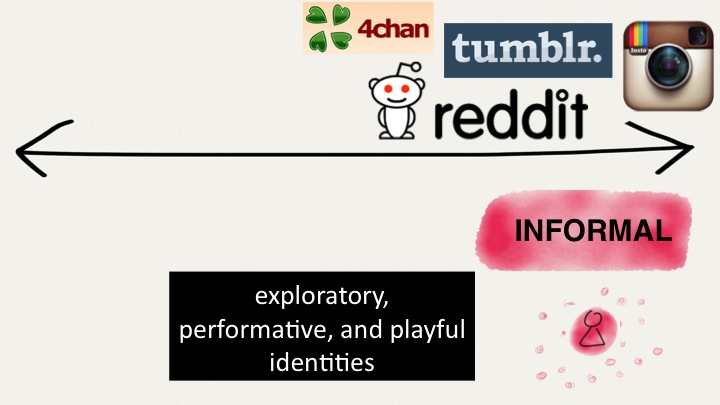
When using Tumblr or Reddit, people are interacting in the informal mode because they can connect with strangers while keeping ones’ identity anonymous. As such, sociality veers towards the exploratory, performative, and even fantastical because people tend to socialize with people they do not know. Consequently, we see a wider spectrum of identitie emerge on social media sites dominant in the informal mode. In the presence of strangers, individuals feel more liberated to try on different identities without the pressure of committing to just one.
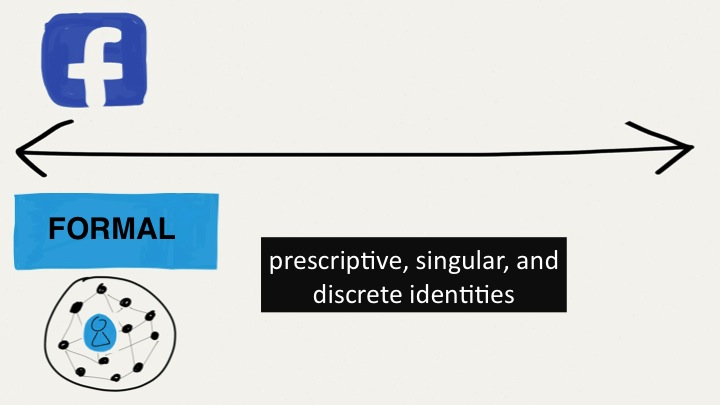
The formal way of interacting online can be exemplified with Facebook and Google+, where people often talk to people that they already know. Formal social media sites also have features that often make it impossible to be anonymous, such as a real-name policy. As a result, social media sites dominant in the formal mode tend to produce prescriptive, singular, and discrete identities.
My research shows that youth are more willing to share risky information and stigmatized emotions in social media platforms dominant in the informal mode because they feel that anonymity removes the risks that may come with personal expression.
When we realize that not all social media sites are the same, that certain sites are more conducive for particular displays of identity, and that displays of identity are very fluid--then we can begin to better understand the behavior on these sites with greater nuance.
Here are some of the other main takeaways from my talk:
- Companies and institutions often misinterpret the meaning of people's social lives, codifying it in a way that forces people into static relationships that don't reflect the fluid nature of actual relationships.
- Organizations that use traditional market and data analytics to segment their stakeholders with sentiment analysis, semantic analysis, and social tracking do not capture the nuances of the Elastic Self. None of those quantitative techniques tell you anything about the context of people's interaction or the difference between how people use facebook, tumblr and twitter.
- Many industries still treat people as predictable masses who operate in one mode and one identity.
- If you don't get that there are formal and informal modes of interaction and that each platform and you treat what people do on the internet AS only ONE MODE of expression, it leads to massive misinterpretations of what people do on the internet.
- Talking to strangers is an important part of the way we socialize - from the earliest modern cities in the industrial era to the earliest web forums - strangers have been a fundamental part of the creative practices that emerges when you throw a bunch of people who have no prescriptive ties - no blood or village ties - together in one space. This is not to say that bad things don't happen in anonymous spaces - as we learned from yesterday's session on online harassment. But at the same time, it's important to understand how anonymity works in ways that minimizes risks for interacting with strangers to ultimately express their emotions and connect with someone who makes them feel like they belong, like they are acknowledged.
- But none of this can happen without informal modes of interaction - if our entire web looked like the formal mode - then everything would be trackable, searchable, and traceable - we should lose sites like reddit, tumblr, weibo, douban, and thousands of message boards.
If you want to get a sense of my sources and research materials, check out my my research tumblr for the Elastic Self.
Before you click play, a note about my panel at The Conference!!
I want to note one thing that is not obvious from just watching the video of my talk. I was on a truly amazing panel line up with two other speakers: An Xiao Mina and Kenyatta Cheese.
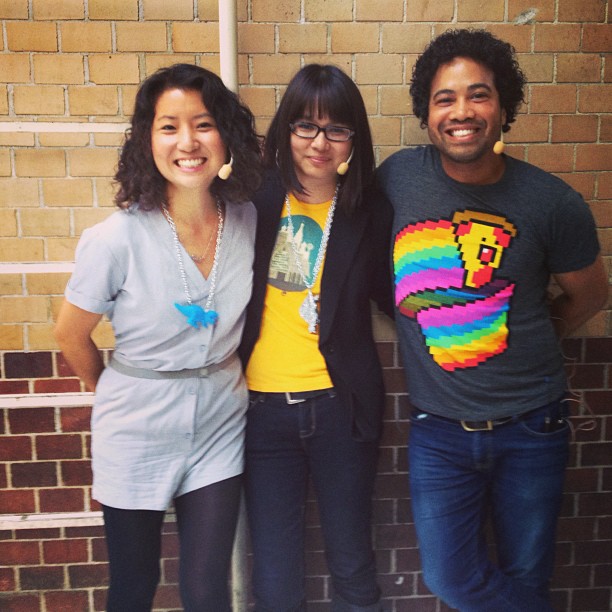
me with my co-panelists, An Xiao Mina and Kenyatta Cheese
Something magical happened at our panel--the content in our talks flowed together to create a very cohesive panel for the audience.
We achieved this sense of flow because of several reasons:
1. We worked in a collaborative way with a wonderful conference programmer. Martin Thörnkvist didn't just assign speakers to a pre-conceived panel. Frist, he created an overarching theme (How Visual Media Affect Culture and Identity Globally), then he invited us to speak on Skype to sketch out the details of our panel. On the call, we came up with the next iteration of the panel description that accurately reflected our interests:
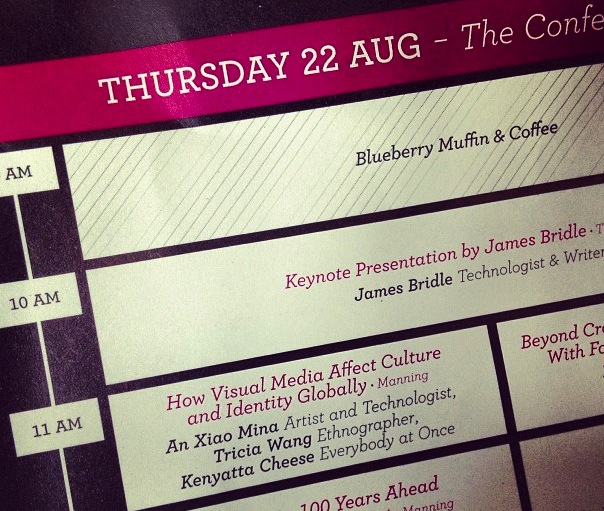
How Visual Media Affect Culture and Identity Globally: The shift to imagery and animation as a primary mode of communication on the web is a fun, creative shift from the primacy of text online. It is also having numerous effects on identity, civic engagement and creative expression. In this session we want to look at the broader implications of this shift, and what it can mean for brands, governments, organizations and anyone else working in this space.
Martin's guidance and trust allowed us to create a panel organically so that we all felt invested in the process.
2. The speakers put a lot of thought into coordinating the order speakers on the panel. An Xiao Mina, Kenyatta Cheese, and I all met before we spoke at the panel to discuss the best order for us to speak to acheive the goals of the panel. This only took a few minutes to decide because we had already taken the time to understand each other's talk. While this seems like a minor decision, it had a major impact in the flow of the panel for the audience.
3. The speakers mentioned each other in their talks. We all made sure to find opportunities to make overlapping connections in our talks more explicit for the audience. By mentioning each other's work (when it made sense), it lowered the cognitive load on the audience. In addition, supporting each other's work creates a holistic panel for the audience where no one is hogging "mic time," as evidenced in our post-panel Q&A video below.
Thank you to Magnus Thure, conference co-organizers Martin Thörnkvist and Yasemin Arhan Modéer, and the planning team for creating such a magical gathering!
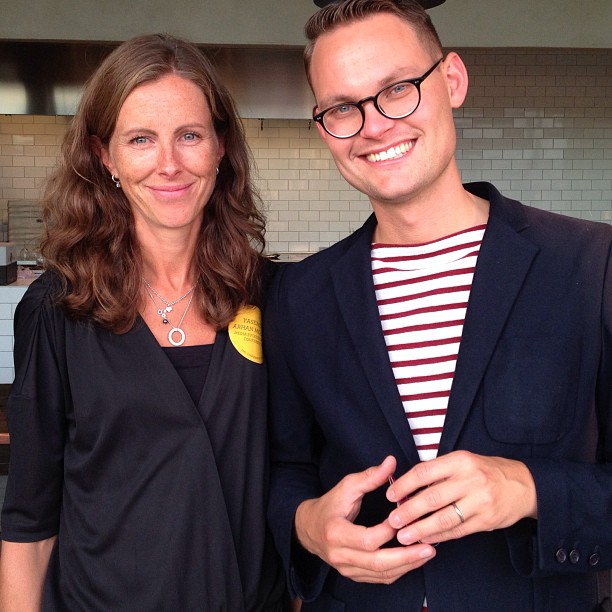
The Conference co-organizers Martin Thörnkvist and Yasemin Arhan Modéer
I also have to thank The Conference for bringing Necomimi Brainwave Cat Ears into my life. The creator of the ears, Tomonori Kagaya, gave a talk about the ears at The Conference. During one of the conference parties, I discovered the ears and could not take them of after Tomonori explained its mechanics to me. I bought them right when I returned to the US!
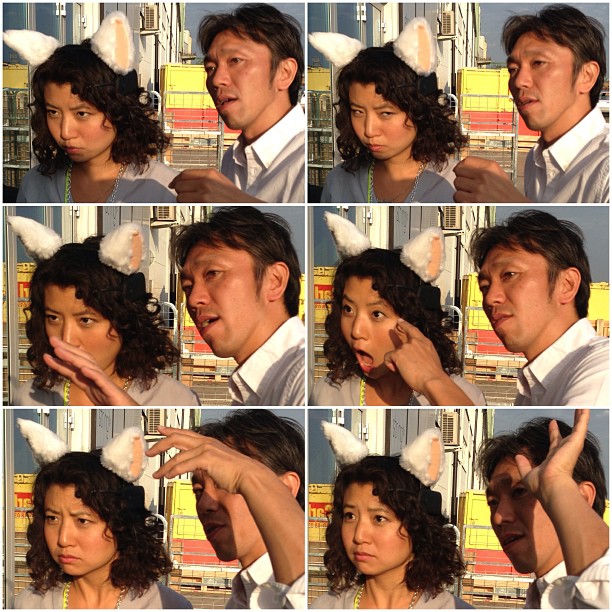
Tomonori Kagaya, creator of the Necomimi Brainwave Cat Ears at Neurowear, explaining to me how to use the e
I can't wait to return to my beloved Malmö for my magical moments. And if you need some reasons to go The Conference in 2014, here are some starters.
I've embedded the videos for An Xiao Mina's and Kenyatta Cheese's talk below. An Xiao Mina discussed the implications of memes on civic engagement. Kenyatta Cheese re-tells the evolution of GIF files through the story of Snow White and the Seven Dwarfs. I also recommend watching Laurie Penny's talk and James Bridle's talk. Both of them are captivating to watch.
An Xiao Mina is an American artist, designer, writer and technologist. She explores the disruptive power of networked, creative communities in civic life. Dubbing memes the "street art of the internet", she looks at the growing role of meme culture and humor in addressing social and political issues in countries like China, Uganda and the United States.
Kenyatta Cheese is a professional internet enthusiast. He studies the ways that ideas spread through culture. Kenyatta is also the co-founder of Everybody at Once which develops audiences for television, media, and sports. In a past life Kenyatta co-created the internet meme database Know Your Meme. Story of GIF tumblr